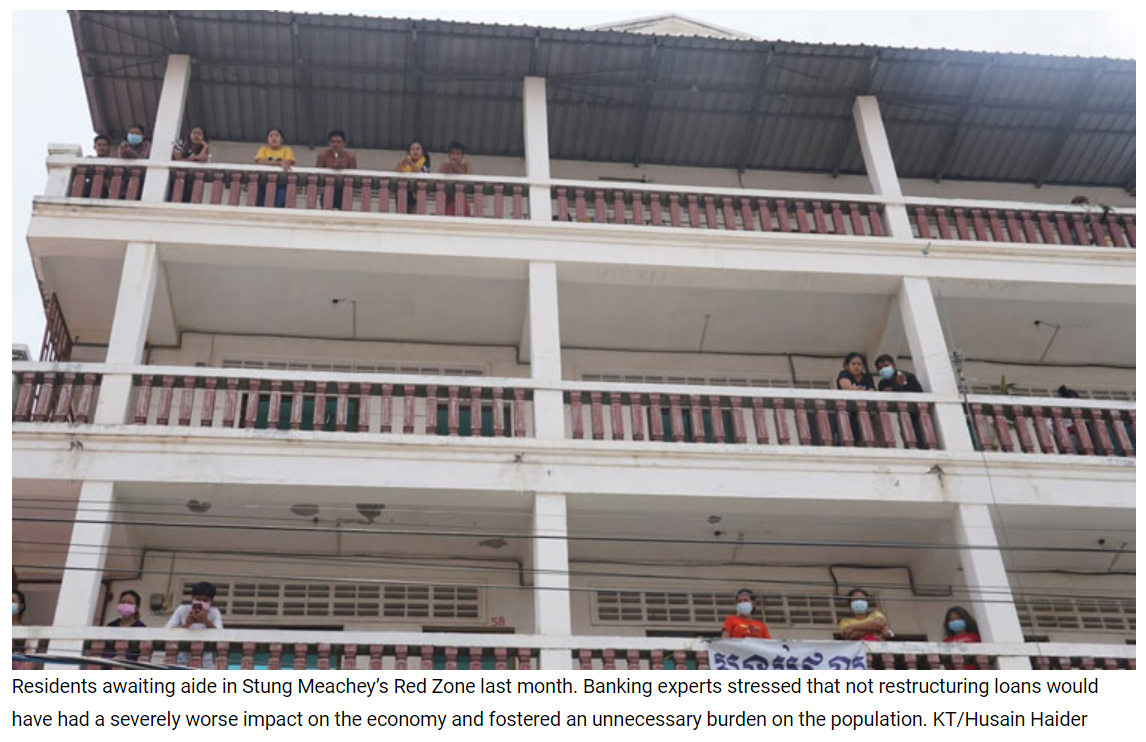Cambodia: Restructured loans helped keep economy afloat: Experts
With up to 20 percent of all Cambodian loans having been restructured in the wake of the pandemic, insiders emphasise that the fallout from leaving them untouched would have been substantially worse.
The Credit Bureau of Cambodia (CBC) this week announced that debt past its due date by more than 30 days (DPD+30) had grown by 2.24 percent in the first quarter. Total loan balances simultaneously grew by 6.44 percent quarter-on-quarter.
Its report, which analyses payments before February’s lockdowns, may see a rise in money owed in the second quarter after the capital endured severe disruption to business operations, compounding existing woes stemming from the pandemic and subsequent drop in tourism.
Oeur Sothearoath, chief executive officer at the CBC, told Khmer Times that DPD+30 may have increased in the absence of loan restructuring, but his organisation had not assessed the extent of the correlation.
“With the second wave leading to a continued economic slowdown, late payments might prolong until the economic situation improves,” Sothearoath warned.
He stressed that risk appetites vary among banking houses so the waiving of interest payments to only focus on principal payments will depend on individual portfolios and the demographic of the customer being assessed.
“Financial institutions, along with the CMA [Cambodian Microfinance Association] and ABA [Association of Banks in Cambodia] have been playing a responsible role in managing the impact of the economic slowdown for those borrower segments severely impacted during the lockdown,” he added. “The recent decision from the industry [to restructure loans] shall ease the situation for needy segments of the population.”
Heng Koy, general manager at the ABC, echoed Sothearoath, stressing while restructured loans had muted the DPDs in the first quarter, but acknowledged that some DPDs will likely transition into non-performing loans (NPLs).
“Loan restructuring has helped to keep DBD levels low and inevitably we will see many restructured loans become DPD and [eventually] default. Loan restructuring has muted the effect to some extent, but it has helped all customers gain time to preserve their current operational cash flows, which have been strongly impacted by the pandemic,” Koy said.
“As soon as the loan restructuring programme ends, many customers will have had enough time to prepare for coming payments, while others will be in a situation in which they cannot serve the loans,” he added.
The ABC has communicated with member institutions to provide leniency to lockdown-affected customers because many living in those areas were unable to reach branches to pay their loans.
Most borrowers in Cambodia have more than one account. However, this number fell by 8 percent over last year.
“The loan restructuring programme is helping customers and the economy. While certainly, the economic impact of the pandemic is tangible, loan restructuring helps to relieve pressure as customers and businesses can preserve cash flow from loan payments… surely a number of borrowers will eventually default on loans due to the economic situation caused by COVID, but loan restructuring has helped to stabilise the economy while the pandemic is at its worst,” Koy stressed.
“Economic slowdown is likely to impact growth in lending and investments. If we look at the last three years’ data, mortgage applications have seen fluctuations with rises and slumps. Seasonally, this quarter showed lower growth than previous years.”
Source: https://www.khmertimeskh.com/50855801/restructured-loans-helped-keep-economy-afloat-experts/


 Thailand
Thailand




